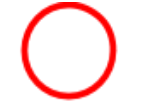CHEMISTRY ALEVEL TEST NOV
1/33
There's no tags or description
Looks like no tags are added yet.
Name | Mastery | Learn | Test | Matching | Spaced |
|---|
No study sessions yet.
34 Terms
How many electrons can fill the first 4 shells?
1: 2
2: 8
3: 18
4: 32. This is using the formula 2n²
What is an atomic orbital?
A region around the nucleus that can hold up to two electrons, with opposite spins.

What orbital does this picture show?
S- orbital

What orbital does this picture show?
P- orbital
What is the number of orbitals making up s- orbital, p-orbital and d-orbital?
S- orbital: 2
P- orbital: 3
d- orbital: 5
What is the number of electrons that can fill the s-subshell, p-subshell and d-subshell?
S-subshell: 2
P-subshell: 6
d-subshell: 10
Use SANDI to describe what happens to ionisation energy across a period.
The number of protons in the nucleus increases, so greater nuclear charge. The increased nuclear charge pulls electrons closer, so the atomic radius decreases. Electrons are added to the same shell, so shielding remains approximately constant. The NUCLEAR attraction between the nucleus and outer electrons increases, therefore first ionisation energy increases across the period.
Use SANDI to describe what happens to the ionisation energy down a group.
The number of protons in the nucleus increases, which increase the nuclear charge, but this is outweighted by extra distance and shielding. The distance increases as outer electrons occupy higher principal energy levels (greater atomic radius). Shielding increases because each element has more filled inner electron shells. Attraction decreases, since outer electrons experience greater shielding and are further from the nucleus. I.E therefore decreases down the group because outer electrons are less strongly attracted to the nucleus.
What is general formula?
the simplest algebraic formula for a member of the homologous series
What is structual formula?
the minimal detail that shows the arrangement of atoms in a molecule
Displayed formula
the relative positioning of atoms and the bonds between them
Skeletal formula
the simplified organic formula, shown by removing hydrogen atoms from alkyl chains, leaving just a carbon skeleton and associated functional groups
homologous series
a series of organic compounds having the same functional group but with each successive member differing by CH2
functional group
a group of atoms responsible for the characteristic reactions of a compound
alkyl group
formula CnH2n+1
aliphatic compound
a compound containing carbon and hydrogen joined together in straight chains, branched chains or non-aromatic rings
alicyclic compound
an aliphatic compound arranged in non-aromatic rings with or without side chains
aromatic compound
a compound containing a benzene ring
saturated
single carbon–carbon bonds only
unsaturated
the presence of multiple carbon–carbon bonds, including C=C, C C / and aromatic rings
Homolytic fission
The breaking of a covalent bond with each bonding atom receiving one electron from the bonded pair forming two radicals.
Describe and explain the effect of chain length on the boiling point of hydrocarbons using ideas about intermolecular forces.
As the chain length of a hydrocarbon increases, its boiling point increases because there are more electrons and a larger surface area, leading to stronger London dispersion forces between molecules.
Describe and explain the effect of branching on the boiling point of hydrocarbons using ideas about intermolecular forces.
More branching in a hydrocarbon decreases the boiling point because branched molecules have a smaller surface area in contact with others, so fewer London dispersion forces form and less energy is required to overcome them.
State why branched chain alkanes and cycloalkanes are more useful than straight chain alkanes
They burn more efficiently.
Can you describe the problems associated with radical substitution
Substitution at any point on a carbon chain leading to a mixture of
isomers
Multiple substitutions on a carbon chain leading to di, tri
haloalkanes etc
Multiple termination steps leading to other products
How to convert Celsius to kelvin
Add 273
What is the formula for concentration (mol/dm³)
mol/vol
3 ways to calc moles?
n = m/mr
n = v/24 (rtp)
n = c x v
cm³ - dm³
divide 1000
cm³ - m³
divide by 1000000
dm³ - m³
divide 1000
m³ - dm³
x1000
ideal gas equation
pv = nRT
R = 8.31
cm3 to dm3
divide by 1000